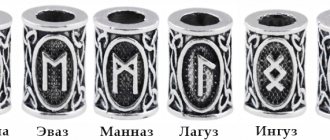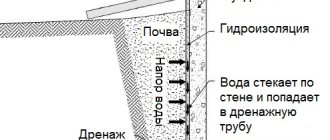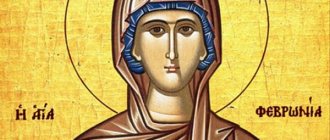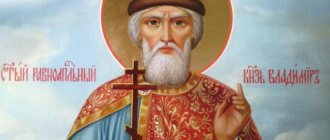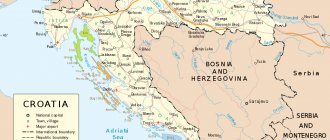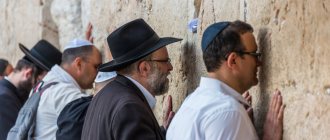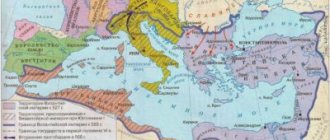Vedic Rus'... How many people know this concept? When did it exist? What are its features? It is known that this is a state that existed in the pre-Christian period. The history of Vedic Rus' has been little studied. Many facts are distorted to please the new rulers. Meanwhile, Rus' of those times was a developed civilized society.
Thus, in ancient Russian society, it was not numerous riches that were considered valuable, but faith in the gods. The Rus swore by their weapons and their God - Perun. If the oath is broken, then “we will be golden,” said Svyatoslav, despising gold.
The ancient Russians lived based on the Vedas. The Vedic past of Rus' is shrouded in many secrets. But still, researchers have done a lot of work and today a lot of interesting information can be told about that distant pre-Christian period. The history of Vedic Rus' will be told further.
What are the Vedas
The Vedas are scriptures, revelations of God. They describe the nature of the world, the true essence of man and his soul.
The literal translation of the word is “knowledge”. This knowledge is scientific, and not a selection of myths and fairy tales. When translating the word from Sanskrit, and this is the native language of the Vedas, it means “apaurusheya” - that is, “not created by man.”
In addition to spiritual knowledge, the Vedas contain information that helps people live happily ever after. For example, knowledge that organizes a person’s living space from building a house to the ability to live without illness and in abundance. The Vedas are knowledge that helps prolong life, explains the connection between the human microcosm and the macrocosm, and much more, right down to planning important endeavors in life.
The Vedas originated in India, becoming the beginning of Indian culture. The time of their appearance can only be guessed, since external sources appeared much later than the Vedas themselves. Initially, knowledge was transmitted orally for many millennia. The design of one of the parts of the Vedas dates back to the 5th century BC. e.
A detailed record of the Vedas is attributed to the sage Srila Vyasadeva, who lived in the Himalayas more than fifty centuries ago. His name "vyasa" translates as "editor", that is, one who was able to "divide and write."
Knowledge is divided into Rig Veda, Sama Veda, Yajur Veda and Atharva Veda. They contain prayers or mantras and knowledge in many disciplines.
The oldest manuscript is the text of the Rig Veda, written in the 11th century BC. e. The fragility of the materials—tree bark or palm leaves—on which the Vedas were applied did not contribute to their preservation.
We learn about the Vedas thanks to mnemonic rules of memorization and their oral transmission, based on the Sanskrit language.
The knowledge transmitted by the Vedas is confirmed by modern scientists. Thus, even before the discovery of Copernicus in the Vedas, using astronomical calculations, it was calculated at what distance the planets of our system are from the Earth.
Religion of the Western Slavs
God Perun, among the Western Slavs, was better known under the name Perkunas. But to this day, little information has reached us about this. There is an opinion that the horseman Vytis, who is depicted on the modern coat of arms of Lithuania, is Perkūnas. The Western Slavs did not have open sanctuaries, they built pagan temples in which stood all the known idols that they worshiped, and not just one of them. The temple itself was separated by a partition; only the priest could approach it. The Eastern Slavs had free access to the temple for all believers. In ancient times, among the Western Slavs, each tribe considered an animal to be its ancestor, and it was revered as sacred. For example, the Lutichi tribe worshiped wolves and considered them sacred animals. During rituals, this tribe wore wolf skins. They believed that the spirit of the wolf protected their tribe from evil spirits. It is believed that thanks to such worship, myths about werewolves appeared. Ancient legends say that sorcerers turned into wolves and that wolves helped those who worshiped them (in the fairy tale “Ivan Tsarevich and the Gray Wolf” the wolf helped the prince).
Russian Vedas
Scientists talk about two branches of Vedic knowledge - Indian and Slavic.
The Russian Vedas have survived less due to the influence of various religions.
By comparing the linguistics and archeology of Rus' and India, one can see that their historical roots are similar and may be common.
The following examples can be cited as evidence:
- The name and archaeological features of the city of Arkaim, the remains of which were discovered in Russia in the Urals, are similar to Indian cities.
- Siberian rivers and rivers of Central Russia have names consonant with Sanskrit.
- The similarity of pronunciation and features of the Russian language and Sanskrit.
Scientists conclude that the flourishing of a single Vedic culture took place in the territory from the shores of the northern seas to the southernmost point of the Indian Peninsula.
The Slavic-Aryan Vedas are considered Russian - this is the name given to a collection of documents reflecting human life on Earth for more than 600,000 years. The Book of Veles is also included in the Slavic Vedas. According to scientists N. Nikolaev and V. Skurlatov, the book contains a picture of the past of the Russian-Slavic people. In it, the Russians are presented as “grandsons of Dazhdbog”, the forefathers Bogumir and Or are described, and the resettlement of the Slavs in the Danube region is described. The “Veles Book” tells about the management of the Slavic-Russian economy and about the system of a unique worldview and mythology.
ABOUT APPEAL TO GODS AND ANCESTORS
All Orthodox Old Believers-Ynglings should turn to their Great Many-Wise Ancestors and glorify our Bright Ancient Gods, the Heavenly Family, as well as kindle the Holy Inglia in Kummirny at their place of residence, in Khorominy: Temples and Sanctuaries, on the banks of Sacred rivers and reservoirs, and also in the Sacred Groves and Oak Forests of our Great Power.
In our homes and dwellings we must remember the Ancient Gods and all the Ancestors of our Clans and read funeral addresses to them: in the morning, when we get up from sleep; in the evening when we go to bed; before and after meals; during the consecration of bloodless Treasures and Gifts, before burning on the Fire Altars, placing them on altars and burial mounds, as well as during the blessing of food and water before the First and Second Meals; at the beginning of creative deeds for the benefit of our Great Clans and the Heavenly Clans and after the end of all our deeds. Orthodox Old Believers-Ynglings usually perform their rituals, rituals and conversions in front of various Kummirs of the Slavic and Aryan Patron Gods of the Clans and the Holy Wise Ancestors, or in front of man-made Images depicting them. On weekdays and on holidays, as well as on weekdays, when we are free from the deeds of everyday life, we must go to the Temple (Temple) for divine services in order to hear the Holy and Wise Word of God and pay due respect to the Light Gods and our many-wise Ancestors, for we must observe Two Great Principles: To sacredly honor your Gods and Ancestors, Always live according to Conscience and in harmony with Mother Nature.
Magi
Magi were considered wise people with knowledge. Their activities extended to many areas of life. So, witches were engaged in household chores and rituals. The very word “after all - ma” meant “to know” and “mother” - “woman”. They were “in charge” of matters that could be solved with the help of household magic.
The sorcerers, called didas or grandfathers, were well versed in sacred legends. Among the wise men and women there were representatives of both simple sorcery and those with serious scientific knowledge.
The Magi of Vedic Rus' became famous among the Slavs for their instructions, help in improving their lives and their desire to understand God's Faith. They were considered sorcerers, well acquainted with herbalism, fortune telling, healing and predictions.
In “The Tale of Igor’s Campaign” there is a mention of Vseslav of Polotsk, also called Volkhv Vseslavyevich. Being a prince's son, Vseslav the Prophet had the ability to turn into a gray wolf, a clear falcon or a bay aurochs, as well as tell fortunes and create obsessions. The prince's son learned everything from the Magi, where his father sent him to study.
With the advent of Christianity, the Magi, revered in Rus', took part in protests against the new faith. Their activities were recognized as illegal, and they themselves were called evil sorcerers, criminals and warlocks, apostates. They were accused of having connections with demons and of wanting to bring evil to people.
A well-known and detailed event occurred in Novgorod, when a rebellion against a new religion was organized by a sorcerer. The people took the side of the sage, but Prince Gleb Svyatoslavich committed a vile act. The prince hacked to death with an ax the organizer of the rebellion. The name of the sorcerer is unknown, but the strength of faith of the sage and his supporters is impressive.
Before the baptism of Rus', the popularity of the Magi was often greater than the popularity of the princes. Perhaps it was this fact that influenced the eradication of paganism in the Slavic lands. The danger for the princes was the influence of the Magi on people as spiritual mentors. And even representatives of the Christian Church had no doubt about the witchcraft and magical abilities of these people.
Among the Magi there were people who were called koshunniks, guslars and baenniks. They not only played musical instruments, but also told epics and fairy tales.
Character traits
There are several basic characteristics of paganism as a worldview system, namely:
- our ancestors spiritualized the forces of nature by worshiping them;
- honored the memory of their ancestors;
- believed in otherworldly forces that take place in a person’s life and directly influence him;
- were convinced that with the help of magic, the influence of certain types of energy, you can change your life in the right direction;
- healed diseases through prayer and natural medicine.
Since there are no authentic mythological texts, all information about the paganism of the Slavs is provided exclusively by secondary sources: archaeological and literary data (chronicles, chronicles, etc.), as well as foreign evidence, Christian teachings against paganism. In addition, Slavic data is compared with data from other Indo-European cultures (Baltic, Iranian, Germanic and others).
At the same time, the most reliable are considered to be those called “modern” (dating back to the 19th and 20th centuries) evidence of pagan rituals of a linguistic, ethnographic and folklore nature.
Famous Magi
The ancient Russian singer Boyan the Prophet is involved in the Magi. One of his gifts was the ability to transform.
Famous sorcerers and priests include Bogomil Nightingale. They called him that for his eloquence and for the fulfillment of pagan stories. He gained his fame for organizing an uprising against the destruction of temples and pagan sanctuaries in Novgorod.
With the advent of Christianity in Rus', the Magi were persecuted and destroyed. Thus, in the 15th century in Pskov, twelve “prophetic wives” were burned. By order of Alexei Mikhailovich, in the 17th century, the Magi were burned at the stake and the witches were buried in the ground up to their chests, and “wise” people were also exiled to monasteries.
ABOUT THE EXTERNAL SIGNS OF FAITH
According to our ancient traditions, Holy Scriptures and legends, during addresses and hymns, as well as when entering our Temples and Sanctuaries, we overshadow ourselves with the Holy Sign [* Holy Sign - also called the Sign of God Perun or Perunitsa (lightning)]. To create the Holy Sign, three fingers of the right hand (large, ring and small) are joined together at the ends in honor of the Great Triglav of the Revealed World - Svarog, Perun and Sventovit, which are the essence - Conscience, Freedom (Will) and Light, and two fingers (index and middle) are connected by straight lines together and mean the Heavenly Family and Lada the Mother of God. Then we place two fingers folded in this way first on our forehead, then on our eyes (on the left eye, then on the right eye), and then on our lips. With this Holy sign we illuminate our Holy Old Faith - Ingliism, repeating the Holy lightning of God Perun, which sanctified the blessed life of all our Ancestors and which sanctifies our daily life in these days. We place a holy sign on the forehead in order to sanctify the mind, which comprehends the Wisdom of our Gods and Ancestors; to our eyes, to sanctify our vision and see the true Creation of our Gods and Ancestors; on our lips in order to sanctify our speech, especially when we pronounce the word of God and the Wisdom of God, which come from our mouths, and we protect our lips from blasphemy. Bowing our heads during addresses and hymns expresses our respect for our Ancient and Native Gods, and for our Holy Wise and Great Ancestors in gratitude for their help in all our deeds and creations.
During the glorification of the Ancient Light Gods and all the Ancestors of our Clans in the Temples and Sanctuaries, in Kummirny near the ancient Kummirs and near the altars on the Fortifications during the Celebration of Bright Days in the Sacred Groves and Dubraves, on the banks of the Sacred Rivers and reservoirs, we create the Sign of Glory. To create it, we initially place our open right palm on our heart, and then we raise it straightening it towards Heaven Svarozhmi ( Fig. 1 ) and say:
“
Glory to Our Gods and Ancestors! »
Orthodox Old Believers-Ynglings in everyday life wear special protective symbols on their bodies, cast from white metal or made from sacred Wood (Oak, Cedar, Birch, Ash, Elm, Linden, etc.), which are called the Amulet of the Tribal Community ( Fig. 2 ), Tribal Amulet ( Fig. 3 ), Amulet of the Inter-Clan Slavic or Aryan Community ( Fig. 4 ).
Each body amulet worn by an Orthodox Old Believer-Yngling is, in one way or another, constantly in relationship with the ancient Spiritual Sources of the Old Faith. In addition, the material from which this or that Amulet is made is itself a constant source of Natural healing power. Most Slavic and Aryan Amulets are made of silver. This noble metal is sacred to Yngling believers, since since ancient times the very beneficial effect of silver items on the body of any white person has been known. Runic Charms are very often used, i.e. Charms on which ancient protective Runes or Runic texts with protective spells are inscribed, as well as Charms made in the form of any Rune. Body amulets made from Sacred Trees also have a very beneficial effect on a person, because... Each Amulet is endowed with a special Natural healing power. Priests-Priests, Elders and Headmen of Communities, in addition to the body-worn Ancestral or Community Amulet, have pectoral Protective Symbols, i.e. worn on the chest (persi) over festive or sacred robes. The sizes of the Pectoral Amulet were different, but no less than a Nokty (1.11125 cm) and no more than a Vershka (4.445 cm), and the average sizes of the Pectoral Amulet ranged from 1 ½ Vershok (6.6675 cm) to 2 ¼ Vershok (10 cm) - see Spind system.
When and how did pre-Christian Rus' arise?
The exact time when Vedic Rus' arose is unknown. But there is information about the construction of the First Temple by the wizard Kolovras, and there is also a date calculated by astrologers - 20-21 millennium BC. e. Built from rough stones, without the use of iron, the Temple stood on Alatyr Mountain. Its appearance is associated with the First Exodus of the Rus tribe from the north.
The Aryans, who came from ancient Iran and India back in the third millennium BC, also settled on Russian soil. e. They settled in Belovodye, where Bogumir taught them art and craft. He, being the forefather of the Slavs, divided people into warriors, priests, traders, artisans and others. The capital of the Aryans in the Urals was called Kayle - a city, now it is called Arkaim.
ABOUT POSTS
Calculation of periods of cleansing of the human body - FASTS, is carried out only according to the Daariysky Krugolet of Chislobog.
The word POST itself is an abbreviation of an ancient common Slavic figurative expression, based on the first letters of the words: P - complete, O - purification, S - own, T - body, Ъ - creation.
This system of observing FASTS in the Old Russian Inglistic Church of the Orthodox Old Believers-Inglings allows our body to cleanse itself and rebuild from one type of food to another.
FASTS OBSERVED BY ALL COMMUNITIES AND PARISHERS OF THE OLD RUSSIAN ENGLISH CHURCH OF ORTHODOX OLD BELIEVERS ENGLISH.
HOLY FAST - nine days, one Slavic Week, from Ramkhat 22 days to Ramhat 31 days. During this period of time, Orthodox Old Believers-Ynglings are not allowed to eat meat, fish, fatty protein (eggs, butter, milk) and spicy foods. During these days, Old Believers need to eat vegetables, fruits, berries, grains and legumes in the morning and evening, and water, juices, and herbal teas during the day. This is due to the body’s preparation for the transition to early preserved food.
DAZHDBOZHIY FAST - eighteen days, two full Slavic Weeks, from 1 to 18 Beyleg. During this period of time, the Orthodox Old Believers-Yinglings are preparing themselves for the transition from early canned food to fully canned food (pickling, smoking, etc.). During the LENT period, Old Believers are not allowed to eat meat, fatty fish, eggs, white bread, fatty dairy products (cream, sour cream) and butter (vegetable oil can be consumed). As for bread products, you can eat “gray” and rye bread, especially those baked from midnight dough. The remaining foods are eaten in the same way as during Holy Lent. To improve metabolism during the day, it is recommended to eat sauerkraut or buckwheat porridge.
PURE FAST - eighteen days, two full Slavic Weeks, from 22 to 40 Geylet. During this period of time, Old Believers are not allowed to eat meat, fatty, sour (fermented) foods, as well as eggs. Any animal or vegetable oil is prohibited in Clean POST! You can - lean fish (except fried), steamed cereals, pasta, “gray” and rye bread, nuts, berries, juices, herbal teas and legumes in small quantities. In the second week of Clean Fasting, fresh plant foods (green onions, radishes, etc.) are gradually introduced.
GREAT LENT - thirteen days, one and a half Slavic Weeks, from 22 to 35 Daylet. During this period, it is not permissible to consume fatty meat foods (except chicken and rabbit meat), fatty fish, oil (except vegetable oil), and dairy products (cream, sour cream). Everything else that is low-fat can be eaten.
BRIGHT FAST - eighteen days, two full Slavic Weeks, from 33 Veylet to 9 Heylet. During this period of time, it is permissible to eat only plant foods in the morning and evening. On the Holy Day of God Kupala, which coincides with the Bright Lent, you can eat meat of any fat content, but it must be cooked on Living Fire (a fire lit from the obtained Living Fire).
ONE-DAY FAST - every seventh day of a nine-day week; according to the Commandment of Svarog: “Read three days a week - the third, seventh and ninth...”, on this day it is recommended to refrain from eating at all, with the exception of juices, water, compotes without berries, herbal teas and jelly (if a one-day FAST coincides with a holiday , then on this day we do not fast, but observe a holiday).
FASTS are not observed by small children under 12 years of age, pregnant and nursing mothers, old men and women over 60 years of age, soldiers on guard duty, as well as the wounded and sick, because they need to eat to gain additional strength and health.
Society of Vedic Rus'
Initially, the Rus formed centers of development - the city of Kyiv in the south and the city of Novgorod in the north.
The Rus always showed kindness and respect towards other peoples and were distinguished by their sincerity.
Before the baptism of Rus', there were also slaves in Slavic society - servants from captive foreigners. The Russian Slavs traded in servants, but considered them younger members of the family. Slaves were enslaved for a certain period of time, after which they became free. Such relationships were called patriarchal slavery.
The place of residence of the Slavic Russians were tribal and intertribal settlements; up to 50 people lived in large houses.
The communal society was headed by a prince, who was subordinate to the people's assembly - the veche. Princely decisions were always made taking into account the opinions of military leaders, “dids” and clan elders.
Communication on the basis of equality and justice took into account the interests of all members of the community. Living according to the laws of the Vedas, the Rus had a rich worldview and great knowledge.
Culture
We know about the culture of Vedic Rus' from surviving cathedrals, archaeological finds and monuments of oral narratives - epics.
The cultural level of the Rus can be judged by the statements of Princess Anna, daughter of Yaroslav the Wise, who became Queen of France. She brought books with her and considered “enlightened” France to be a large village.
“Unwashed” Russia amazed travelers with the presence of baths and the cleanliness of the Slavs.
Numerous temples and sanctuaries surprised with their splendor and architecture.
Vedic temples
Above each settlement stood a temple dedicated to the Vedic God. The word “temple” itself meant a mansion, a rich house. The altar was named after the sacred mountain Alatyr, the elevation “pulpit” for the priest to pronounce a speech came from “mov”, which means “to give a speech”.
The most beautiful temples of Vedic Rus' towered over the Holy Ural Mountains next to the Konzhakov Stone, over Azov - a mountain in the Sverdlovsk region, over Iremel - a mountain not far from Chelyabinsk.
Many Christian churches preserve images of pagan gods, mythological animals and Slavic symbols. For example, on the stone bas-relief of the Dmitrov Cathedral there is an image of the ascension of Dazhdbog.
You can get acquainted with examples of the temple art of the ancient Slavs in the temple of the Ratars - the Approvals in Retra.
Legends
Many fairy tales and legends of Vedic Rus' were transmitted orally. Some have been changed over time. But even now the texts of “The Book of Veles”, “The Tale of Igor’s Campaign”, “Boyan’s Hymn” and “Dobrynya and the Snake” recreate a picture of the past, the legendary history of Vedic Rus'.
Restored by the writer G. A. Sidorov, these written monuments amaze with the intimacy and depth of knowledge of the Russian Slavs. In the writer’s collection you can get acquainted with the Dead Heart, the daughter of Lada, legends about the temple of Svarog, Ruevit, volots, etc.
SYMBOL OF THE OLD FAITH
The main Symbol of the Old Faith, as it was originally in ancient times and as it is today, is the Star of England ( Fig. 5 ). It not only symbolizes the Primordial Pure Light - the Primary Fire of Divine Creation and the Shining Light of our Yarila-Sun, but also a white harmonious Man, a descendant of the Ancient Light Gods.
Three triangles, symbolizing the Divine Origin , mean one of the Great Triglavs, who patronizes the Divine World (Reveal, Navi, Glory, Rule); the outer Circle framing the Great Triglav is the One Life-Giving England, and the endless space outside the Circle tells us about the One Creator, whose name is the Great Ra-M-Ha. Three triangles, symbolizing the Human Beginning , mean: Healthy Body, Strong Spirit and Bright Soul, and the outer Circle framing them means Clear Conscience. The endless space outside the circle symbolizes God's multifaceted World, in which the descendant of the Ancient Light Gods, Man, lives and creates. Three triangles, symbolizing the Natural Origin , mean Earth, Water and Fire, and the outer Circle framing them means Air. The endless space outside the Circle symbolizes the Most Pure Svarga, i.e. Heaven.
Additional accompanying symbols are often inserted into the center of the Star of England. For example, a Sword ( Fig. 4 ) facing downwards means the preservation of Ancient Wisdom [If a Sword facing downwards means preserving Ancient Wisdom, then a Sword facing upwards means the protection of all Clans and lands of the Holy Race from external and internal enemies ]. Communities wearing such symbols belong to the Slavic and Aryan Communities, in which Ancient Wisdom is stored and passed on from generation to generation. Perunitsa, placed in the center of England ( Fig. 6 ), symbolizes the protection and patronage of God Perun. As a rule, amulets with Perunitsa are worn by representatives of Communities that honor and glorify the Many-Wise God Perun, the Patron of the Slavic Clans. The Star of England, connected to the symbol in the center, which our Ancestors originally called the Messenger, brings Health, Happiness and Joy. This ancient Amulet of happiness ( Fig. 7 ), sometimes in common parlance people call Mati-Gotka, i.e. Mother Ready. Community members wearing the Mati-Gotka Amulet symbolism belong to the Slavic and Aryan Communities, in which various forms of Ancient Culture and Traditions are preserved and passed on from generation to generation.
Some Priests-Priests, Elders and Headmen of the Slavic and Aryan Communities, in addition to body-worn Ancestral or Community Charms, as well as pectoral ones, i.e. Protective Symbols worn on the chest, over clothes, are also worn by the confidant Sources of Spiritual and Natural Power, called Artakons.
Artakona combines at its core two powerful Forces of the living World: the claw of Rodovich [3] , that is, a representative of the animal world, which is the Natural Patron Symbol of the Family, and a rosary made from the Sacred Tree. In Fig. 8 you can see two Artakons. The right Artakona connects the Eagle Claw and the Sacred Oak rosary, and the left Artakona connects the Bear Claw and the Sandalwood rosary. * 3. Rodovich’s claw - symbolized birds or animals revered in the Rod. Their claws are considered the Sources of ancient Spiritual Power, so the claws of the Eagle, Busla (Stork), Falcon, Raven, Owl, Fox, Wolf, Bear, Pardus (Leopard), etc. were worn on the chest.
